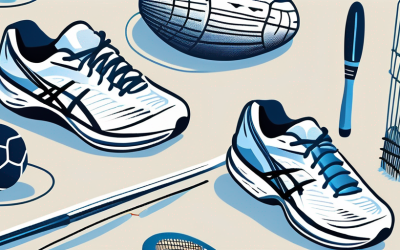The spine is a critical part of our body, vital to our health and well-being. It provides support, stability, and mobility to our entire body. However, our daily activities and external factors can take a toll on our spine, leading to pain and discomfort. To help you maintain a healthy spine throughout the year, we have compiled a list of seasonal tips to keep your back happy and robust.
Spring: Awakening Your Spine with Proper Stretching and Activity
As the cold winter months end, spring promises renewal and growth. It’s the perfect time to awaken your spine and get moving. Start your day with a gentle stretch routine that stretches the muscles supporting your spine. Begin with a forward fold, touching your toes and allowing your spine to lengthen. Follow this with a cat-cow stretch, arching, and rounding your back to improve flexibility. Regular physical activity like walking or swimming can strengthen your spine and enhance your health.
Transitioning from winter to spring also means spending more time outdoors. Whether you’re gardening, hiking, or participating in outdoor sports, it’s important to remember proper body mechanics. Bend your knees when lifting heavy objects to minimize strain on your spine, and use ergonomic tools that protect your back. Consider wearing supportive footwear that cushions your steps and maintains proper alignment.
Taking Care of Your Spine While Gardening
Gardening is a popular activity during spring, but it can strain your back if not done correctly. To prevent discomfort, use a kneeling pad or a cushioned stool to reduce stress on your knees and lower back. Maintain good posture by keeping your back straight while lifting and using proper digging techniques. Consider using lightweight tools and taking frequent breaks to give your spine a rest.
Stay Hydrated for Optimal Spinal Health
Hydration is crucial for overall health, including the health of your spine. In the summer heat, staying hydrated is essential to maintain the intervertebral disks’ elasticity and prevent dehydration-related muscle cramps. Drink plenty of water throughout the day, especially before, during, and after physical activity. Avoid excessive consumption of sugary drinks and caffeine, as they can dehydrate your body and potentially affect your spinal health.
Additionally, staying hydrated can help absorb essential nutrients that support the health of your spine. Water acts as a lubricant for your joints, including the vertebrae in your spine, allowing for smooth movement and reducing the risk of injury. It also helps to flush out toxins from your body, promoting overall wellness.
When it comes to hydration, it’s not just about drinking water. Consuming foods with high water content, such as fruits and vegetables, can also contribute to your overall hydration. Foods like watermelon, cucumbers, and oranges are refreshing and provide a hydrating boost to your body.

Summer: Hydration and Spinal Health in the Heat
As the temperature rises, it becomes even more crucial to prioritize hydration and protect your spine from the scorching summer sun. Preventative measures are essential to ensure your spine remains healthy and pain-free during the hot summer months.
Aside from staying hydrated, incorporate strengthening exercises into your routine to support your spine. Focus on core strengthening exercises such as planks, bridges, and bird-dog poses. A strong core stabilizes your spine and helps distribute forces more evenly, reducing the risk of back pain and injury.
Protecting your skin from harmful UV rays is essential in outdoor activities. Prolonged sun exposure can lead to skin damage and even contribute to back pain. Apply sunscreen with a high SPF and wear protective clothing, such as a wide-brimmed hat and lightweight, long-sleeved shirts.
Recommended Water Intake for Optimal Spinal Health
Adequate hydration is crucial for maintaining optimal spinal health. The amount of water you need depends on various factors, including age, weight, and activity level. As a general guideline, drink at least eight glasses (64 ounces) of water daily. However, during intense physical activity or prolonged outdoors, adjust your water intake accordingly to replenish fluids lost through sweat.
Furthermore, it’s important to note that not all fluids are equal when hydrating your body. While water is the best choice for staying hydrated, you can incorporate other options, such as herbal teas, infused water, and fresh fruits and vegetables with high water content, like watermelon and cucumber. These alternatives not only provide hydration but also offer additional nutrients that contribute to overall health.
Protect Your Spine While Enjoying Summer Activities
Summer is a time for fun and excitement, but protecting your spine while engaging in outdoor activities is essential. Practice proper form and technique, whether playing beach volleyball or riding a bike. Avoid sudden jerking movements that can strain your back, and use appropriate safety gear, such as a helmet, when cycling to prevent spinal injuries. Remember to listen to your body and take breaks when needed.
In addition to practicing proper form, it’s beneficial to incorporate stretching exercises into your routine to improve flexibility and reduce the risk of muscle imbalances. Stretching before and after physical activity helps warm up your muscles and increase blood flow to the spine, promoting better mobility and reducing the likelihood of injury. Consider incorporating stretches such as the cat-camel stretch, seated forward fold, and child’s pose into your pre- and post-activity routine.
You can ensure your spine remains healthy and pain-free throughout the season by prioritizing hydration, protecting your skin from the sun, and practicing proper form and technique during summer activities. Remember, your spine is the backbone of your body, so take care of it and enjoy all the summer adventures that await!
Fall: Back-Friendly Practices for Outdoor Chores
As the leaves change color and the air turns crisp, fall brings a vibrant beauty that beckons us outdoors. However, with the beauty of fall also comes the need for outdoor chores. From raking leaves to preparing your garden for winter, practicing back-friendly techniques is essential to avoid unnecessary strain on your spine.
Prioritize good posture while performing outdoor chores. Whether raking leaves or bending down to plant bulbs, ensure your spine is aligned, and your movements are controlled. Bend your knees and engage your core as you lift heavy objects, such as bags of leaves or heavy pots. Consider using ergonomic tools, such as a rake with an adjustable handle, to minimize strain on your back.
Transitioning from summer to fall also means cooler temperatures, which may tempt you to become less active. However, maintaining an active lifestyle is vital for spinal health. Engage in activities you enjoy, such as brisk walking or biking, to keep your spine strong and flexible.
Preventing Spinal Injuries While Raking Leaves
Raking leaves is a typical autumn chore, but it can stress your spine if not done correctly. Choose a rake with a handle of appropriate length for your height to prevent injuries. Take frequent breaks to rest your back and stretch your muscles. When raking, use your leg muscles to generate power rather than relying solely on your back. Remember to rotate sides regularly to distribute the workload evenly.
The Importance of Fall Fitness Activities
With the cooler temperatures, fall provides the perfect opportunity to engage in fitness activities that are gentle on your spine. Consider swimming, yoga, or Pilates, which promote strength, flexibility, and good posture. These activities benefit your spine and contribute to your overall well-being.
Furthermore, fall fitness activities can be a great way to enjoy the season’s beauty. Imagine refreshingly swimming in a lake surrounded by colorful foliage or practicing yoga in a serene park with leaves gently falling around you. These activities provide physical benefits and allow you to connect with nature and find peace amid a busy season.
Fall fitness activities can also be an excellent opportunity to spend quality time with loved ones. You can organize a friendly game of touch football in the park or take a family hike to explore the breathtaking trails adorned with autumn hues. Not only will you be strengthening your spine, but you will also be creating lasting memories and fostering solid relationships.
Winter: Safeguarding Your Spine Against the Cold
As winter arrives, bringing colder temperatures and unpredictable weather, it’s crucial to safeguard your spine against the cold. The cold weather can cause stiff and tense muscles, increasing the risk of back pain and injuries. Fortunately, you can take steps to protect and support your spine during the winter months.
One important aspect of winter spine care is maintaining proper hydration. Cold weather can lead to dehydration, which can affect the health of your spinal discs. These discs act as shock absorbers for your spine, and when they are dehydrated, they become less flexible and more prone to injury. Be sure to drink plenty of water throughout the day, even if you don’t feel as thirsty as in warmer weather.
Warm up your body before engaging in any physical activity. Cold muscles are more prone to strains and sprains. Incorporate dynamic stretches, such as leg swings and arm circles, to increase blood flow and flexibility. Dress in layers to regulate your body temperature and keep your muscles warm and relaxed.
During the winter, it’s common for outdoor activity levels to decrease due to the weather conditions. However, maintaining an active lifestyle is crucial for spinal health. Find indoor activities, such as yoga or dancing, that keep your body moving and your spine flexible. Regular exercise also releases endorphins, improving your mood and overall well-being.

Preventing Winter-Related Back Pain
The cold weather can increase muscle tension and stiffness, leading to back pain. To prevent winter-related back pain, practice good posture and ergonomics, especially when shoveling snow. Bend your knees and lift with your legs rather than bending from your back. Use a shovel with a curved handle to minimize strain on your spine, and take breaks as needed to prevent overexertion.
It’s also important to pay attention to your footwear during the winter months. Slippery surfaces can increase the risk of falls, resulting in spinal injuries. Invest in shoes or boots with good traction to provide stability and reduce the chances of slipping. Additionally, consider using ice cleats or traction devices for added grip when walking on icy surfaces.
The Benefits of Indoor Exercise for Spinal Health
Winter doesn’t have to be a season of hibernation when staying active. Engaging in indoor exercises helps maintain spinal health and provides an opportunity to escape the cold. Indoor activities, such as aerobics classes or home workouts, can help build strength, improve flexibility, and relieve stress, all while keeping your spine in top shape.
Furthermore, incorporating exercises explicitly targeting your core muscles can provide additional support for your spine. Strengthening your core helps stabilize your spine and reduces the risk of back pain. Consider adding exercises like planks, bridges, and bird dogs to your indoor workout routine to keep your core muscles strong and your spine well-supported.
Following these seasonal tips ensures you can maintain spinal health throughout the year. Remember to listen to your body, practice good body mechanics, and seek medical advice if you experience persistent back pain or discomfort. You can enjoy an active and pain-free lifestyle with proper care and attention, supporting your overall health and well-being.



